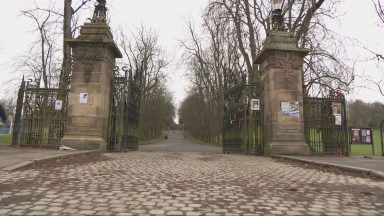Temporary signs outlining Henry Dundas’ involvement in the transatlantic slave trade have been erected around a monument in Edinburgh.
The move comes following disagreement over how to highlight the 18th-century politician’s past, as well as renewed public pressure for action after the death of George Floyd in the USA.
The signs will remain in place at the Melville Monument for up to two months while a permanent plaque is created and planning permission is agreed.
The signs read: “On the plinth at the centre of St Andrew Square stands a neoclassical column with a statue at the top. This represents Henry Dundas, 1st Viscount Melville (1742-1811). He was the Scottish Lord Advocate and an MP for Edinburgh and Midlothian, and the First Lord of the Admiralty.
“Dundas was a contentious figure, provoking controversies that resonate to this day. While Home Secretary in 1792 and first Secretary of State for War in 1796 he was instrumental in deferring the abolition of the Atlantic slave trade.
“Slave trading by British ships was not abolished until 1807. As a result of this delay, more than half a million enslaved Africans crossed the Atlantic. Dundas also curbed democratic dissent in Scotland.
“Dundas both defended and expanded the British empire, imposing colonial rule on indigenous peoples. He was impeached in the United Kingdom for misappropriation of public money and although acquitted, he never held public office again.
“Despite this, the monument before you to Henry Dundas was funded by voluntary contribution from officers, petty officers, seamen and marines and erected in 1821, with the statue placed on top in 1827.
“In 2020 this was dedicated to the memory of the more than half a million Africans whose enslavement was a consequence of Henry Dundas’s actions.”
Wording for the signs and plaque were put together at a meeting last month, comprising council leader Adam McVey, depute leader Cammy Day, Edinburgh World Heritage, Scotland’s first black professor Geoffrey Palmer and an expert from Edinburgh University.
Cllr McVey said: “It’s right that a more accurate description was agreed for the plaque at the statue of Henry Dundas and we were keen to act quickly.”
Story by local democracy reporter Noa Hoffman
Follow STV News on WhatsApp
Scan the QR code on your mobile device for all the latest news from around the country




























